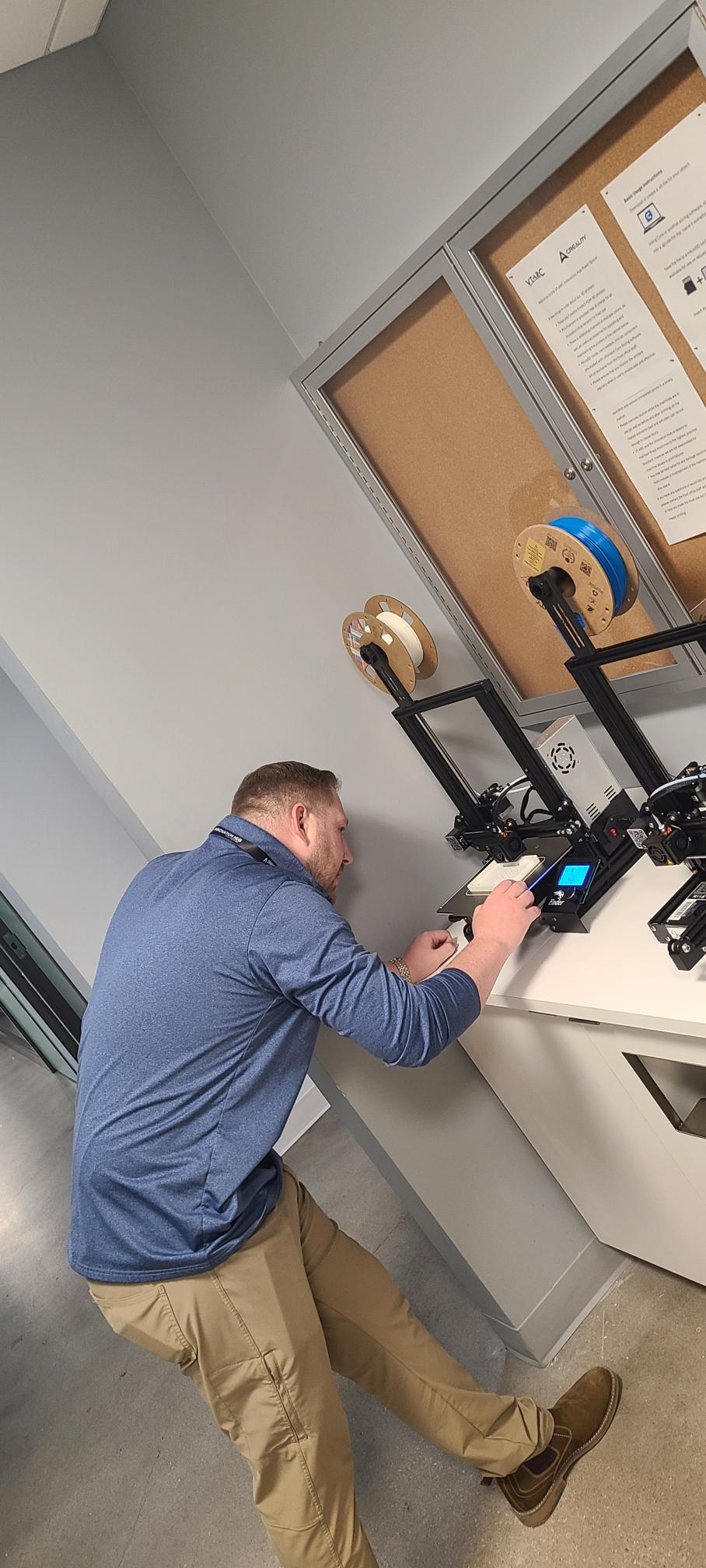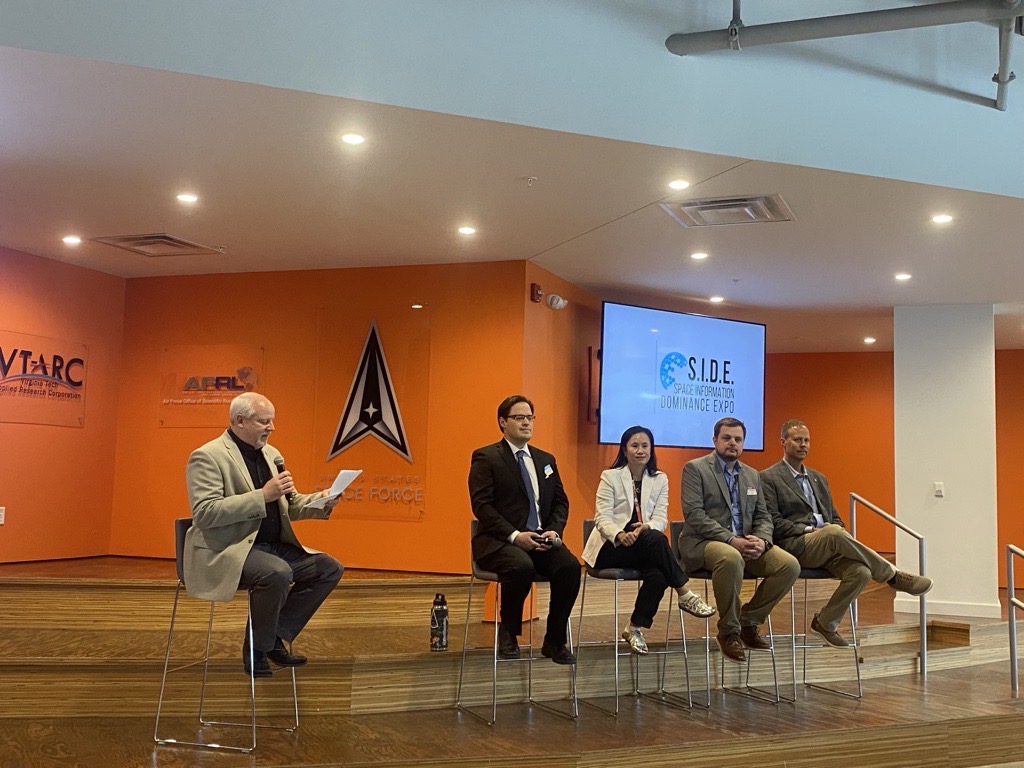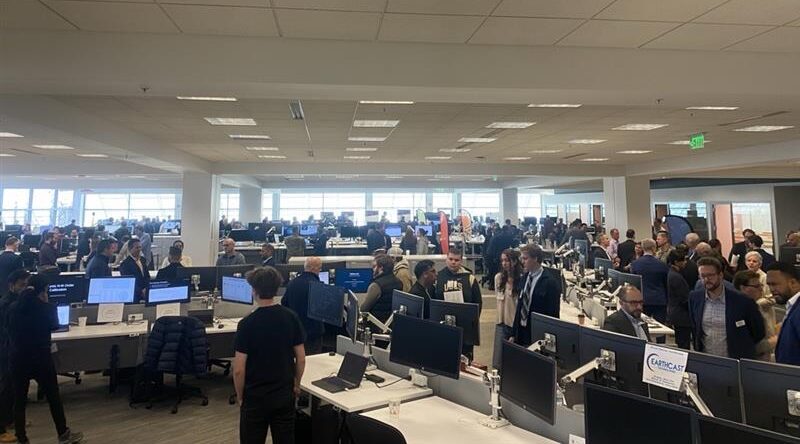By: Samantha Louque, Marketing and Outreach Project Coordinator at the Innovation Hub
The U.S. Space Force, the digital frontier of U.S. national security, stands apart from other military branches in both size and mission. With fewer Guardians than some U.S. Army bases have soldiers, the youngest military branch must defend American interests in the vast, contested domain of space—not with boots on the ground, but through advanced technology and digital warfare. To maintain superiority, the Space Force relies on innovation and next-generation partnerships with both industry and academia.
That’s a big job for a small organization. To succeed, the Space Force strategically leverages partnerships with industry, academia and specialized R&D hubs. Whether it’s a multimillion-dollar satellite development contract with a major defense contractor or a seed grant to a startup building disruptive space tech, these alliances drive the innovation required for national security.
One of the most forward-leaning of these collaborations is with the Innovation Hub—a purpose-built facility in Colorado Springs created through the Virginia Tech Applied Research Corporation (VT-ARC), Space Systems Command, and the Air Force Office of Scientific Research. This hub plays a critical role in accelerating space innovation by connecting defense leaders with commercial and academic problem-solvers in a dynamic, cloud-enabled environment.
The Innovation Hub: Bridging Government, Industry and Academia for Space Domain Awareness
The space domain has undergone explosive transformation over the last decade. In 2024 alone, nations and commercial players around the globe launched 12 times as many satellites as they did in 2014. By May of 2025, SpaceX contributed over 1,000 satellites. Yet not all of these space objects are friendly. Some are launched by U.S. adversaries, and estimates suggest more than 1 million uncategorized objects now orbit the Earth—posing a massive challenge to national security and space domain awareness (SDA).
For the U.S. Space Force, tracking, identifying, and responding to every potential threat in orbit is an impossible task alone. That’s why it leans heavily on collaboration across government agencies, defense contractors, research institutions, and academic innovators. But coordinating this wide array of partners—who often face proprietary concerns, security clearances, and resource limitations—requires a unique operational framework. Enter the Innovation Hub, a multilateral collaboration facility based in Colorado Springs.
Unlocking Collaboration with the Sandbox Platform
One of the keys to the Innovation Hub’s success is its “Cloud Sandbox,” a cloud-native development environment that mirrors DoD GovCloud infrastructure but remains unclassified (IL2 security level). This enables students, startups, international collaborators, and non-DoD users to contribute to defense solutions without traditional classification barriers. Key benefits include:
- Realistic DoD-grade environment for rapid prototyping and R&D
- Open access and customizable IP-sharing controls to protect participants’ innovations
- A unique platform where academic and commercial solutions can evolve into impactful tools for the Space Force
This platform helps break down silos, ensuring that vendors and researchers can retain ownership of their work while still integrating within government ecosystems.
A Small Team Driving Big Impact
The Innovation Hub isn’t just about infrastructure—it’s about people and resources. The organization supports 23 different government teams, offering services like business intelligence, program planning, event coordination, and marketing support.
Most notably, its three-person data science team plays an outsized role in defense innovation. This agile unit helps Space Force teams develop:
- Prototype software programs
- Advanced analytical tools
- Space situational awareness solutions
- Next-generation technologies
By lowering the technical and bureaucratic barriers to entry, the Hub fosters a digital battlefield where academic know-how, private-sector technology, and government mission intersect seamlessly.
Playing in the Sandbox: Accelerating Prototypes into Mission-Ready Space Force Tools
The Innovation Hub’s AWS-based Sandbox is more than a collaborative platform—it’s a digital launchpad designed to match the U.S. Department of Defense’s (DoD) infrastructure specifications. Built on Amazon Web Services (AWS) GovCloud, the Sandbox mirrors the technical environment of official DoD cloud systems, allowing developers to create secure proof-of-concept systems that can seamlessly scale into operational programs.
This alignment with DoD architecture means that once a team builds and tests a prototype in the Sandbox, it can later transition into a Program of Record (PoR) with minimal friction. By eliminating the need to re-engineer solutions for classified military use, the Space Force saves time, money, and operational delay—key factors in staying ahead in the fast-evolving space domain.
Proof of Collaboration: From Academia to Orbit-Ready
To date, 17 cross-sector teams—from government labs and defense contractors to universities and startups—have successfully deployed and tested technologies within the Innovation Hub’s AWS Sandbox. Its flexible architecture and IL2-level security enable participants to integrate efforts without the usual barriers of classification, intellectual property risk, or legacy system constraints.
One real-world achievement underscores the Sandbox’s transformative potential. During a recent summer session, a U.S. Air Force Project ARC intern, working on the Space Domain Awareness (SDA) Tools, Applications, and Processing (TAP) Lab, partnered with Professor Greg Furlich, University of Colorado Boulder and members of the Overhead Persistent Infrared Radar TAP Lab, Boulder, CO.

Together, this multi-agency team developed a tracking tool that used Geostationary Operational Environmental Satellite (GOES) data to detect ionospheric disturbances triggered by the Starship IFT-4 launch—and did so within just 53 seconds. The prototype, built within the Innovation Hub’s cloud environment using AWS EC2 and S3, highlights the Sandbox’s ability to enable rapid, high-impact technical development in a secure, production-ready framework.
Why It Matters: Enabling Space Force Digital Readiness
By creating a centralized, scalable, and low-friction platform to test and share innovations, the Innovation Hub Sandbox empowers faster, smarter digital tool development across the space defense ecosystem. It’s a prime example of how collaborative, cloud-native tools can bypass traditional bottlenecks and turn ideas into operational capabilities—all while protecting sensitive data and IP.
Changing Dimensions: How AI and 3D Modeling Are Transforming Space Threat Analysis
As space becomes increasingly congested and contested, the need to accurately identify, model, and analyze foreign space assets has never been more urgent. The latest 2025 Space Threat Assessment Report warns of adversarial spacecraft developing highly advanced maneuvering and counterspace capabilities. For the U.S. Space Force, being able to visualize and physically inspect these threats—down to the structural and technological level—could offer a significant edge in defending U.S. assets on orbit.
Major Sean Allen, Chief of the SDA TAP Lab, proposed a simple but powerful idea: take an image of a suspicious space object, trace it, and manually create a 3D model from it. Doing so would help analysts determine whether a satellite functions as its operator claims—or if it hides capabilities that only a physical replica might reveal.
But the Innovation Hub’s data science team took the concept one step further by automating the entire process. “We decided to create a way to automate it,” said Garrett Anderson, VT-ARC Senior Data Scientist. His team is now exploring the use of cutting-edge artificial intelligence techniques—Neural Radiance Fields (NeRFs) and Gaussian splatting—to convert 2D images or video stills of spaceborne objects into high-fidelity 3D models that can be printed and physically analyzed.

From Pixels to Prototypes: AI Tools That Reshape Satellite Analysis
These advanced 3D modeling techniques are revolutionizing how the Space Force understands on-orbit threats:
- Neural Radiance Fields (NeRFs): A deep learning system that reconstructs full 3D scenes by learning light behavior across 2D images. NeRFs create highly detailed renderings by synthesizing views not originally captured, helping analysts visualize hidden structures or subsystems.
- Gaussian Splatting: A fast-visualization technique that uses colored point clouds accounting for orientation, transparency, and size. While less detailed than NeRFs, splatting provides accelerated modeling for rapid evaluations.
By combining both methods, the team enables dynamic 3D reconstructions with accuracy and speed—features that are crucial in national security applications. These models not only allow Space Force personnel to examine physical replicas of satellites but also add context to behavioral or positional anomalies observed in orbit.
Looking Ahead: Partnering with Satellite Imagery Providers
The ultimate goal is to integrate this 3D modeling pipeline with commercial satellite imagery feeds, including partnerships with small businesses and satellite data providers. This would allow rapid conversion of new satellite imagery into tangible models—enhancing situational awareness, threat validation, and strategic planning.
These efforts reinforce the Innovation Hub’s core mission: to empower tech-driven defense innovation by bridging military needs with academic research, private-sector tools, and AI-driven capabilities.
From Prototype to Protection: Why the Innovation Hub’s Tools Matter for U.S. Space Security
As space threats and emerging technologies escalate, access to a collaborative cloud computing environment or AI-driven 3D modeling tools may not sound revolutionary—but for the U.S. Space Force, these capabilities are critical. They often make the difference between a promising concept collecting dust or becoming an operational asset that empowers Guardians to defend America’s space interests.
The Innovation Hub, with its cloud-native Sandbox, cutting-edge data science team, and continuous experiments in automated satellite modeling, exemplifies how cross-sector partnerships, secure innovation environments, and access to commercial-grade tools can accelerate national defense solutions from concept to combat-ready.
“Working with such a diverse and talented community of people revolutionizing the space industry is the highlight of my work at the Innovation Hub,” concluded Anderson. “I look forward to seeing what cool data-science projects we’ll get to do in the future.”
As the space domain continues to evolve, the Innovation Hub offers a scalable, flexible, and unclassified path for transforming brilliant ideas into real-world impacts—ensuring America remains a leader in space domain awareness, data science innovation and technological readiness for orbital defense.
Effort sponsored in whole or in part by the Air Force Research Laboratory, USAF, under Partnership Intermediary Agreement No. FA9550-22-3-0001. The U.S. Government is authorized to reproduce and distribute reprints for Governmental purposes notwithstanding any copyright notation thereon. The views and conclusions contained herein are those of the authors and should not be interpreted as necessarily representing the official policies or endorsements, either expressed or implied, of the Air Force Research Laboratory.

